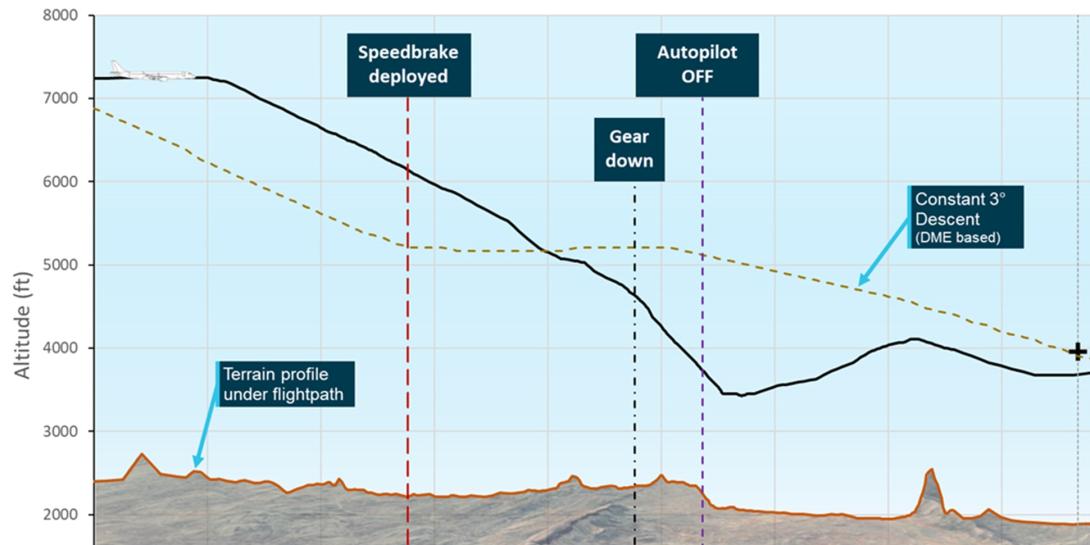
An Embraer 190 airliner’s high rate of descent while on approach to Alice Springs reinforces the importance to flight crews of continuous attention to their aircraft’s selected autoflight system mode, an ATSB investigation report details.
On 24 August 2023, an Alliance Airlines-operated Embraer 190 was on a scheduled passenger flight from Darwin to Alice Springs with 63 passengers, 2 flight crew and 2 cabin crew on board.
Approaching Alice Springs Airport at about 10,000 ft, shortly after 4:15 pm local time, the flight crew, with the first officer as pilot flying and the captain as pilot monitoring, were advised by air traffic control to expect to overfly the airport before conducting a circuit to land on runway 12.
However, ATC subsequently offered a shortened straight-in visual approach.
At the crew’s request, they were cleared by ATC to track west as required, to allow for extra track miles to configure the aircraft (as it was at a higher altitude than it normally would be for that approach).
To expedite the aircraft’s descent, the flight crew initially extended the slats, flaps and speedbrakes to increase drag. They also selected flight level change mode (FLCH) in the aircraft’s autoflight system (one of 11 modes that control the aircraft’s vertical flight path), to ensure the aircraft did not exceed the 210 kt speed requirement set by ATC.
They subsequently opted to further increase drag by extending the landing gear, despite the aircraft having sufficient track miles remaining to comfortably intercept a normal descent profile.
“FLCH mode controls the selected speed via pitch changes rather than thrust adjustments, so as the aircraft entered a turn with its gear down, it pitched nose down to maintain the selected speed, which increased the rate of descent significantly,” ATSB Director Transport Safety Stuart Macleod said.
Shortly after, and possibly influenced by a high workload, the pilot flying inadvertently changed the selected vertical control mode to flight path angle mode, where the aircraft maintains a set flight path angle to approach the selected altitude.
At this time, the captain was looking outside the aircraft, monitoring terrain clearance, and did not identify the changes in flight mode.
“Then the pilot flying did not identify the aircraft was starting to automatically capture the selected altitude, and selected a higher altitude, which disarmed the altitude select mode,” Mr Macleod explained.
“This resulted in the flight director resuming a high rate of descent close to terrain, which was not promptly identified by the pilot monitoring, due in part to their focus looking outside the aircraft.”
The crew’s attempts to arrest the descent were not immediately successful, and the aircraft descended within 1,800 ft of ground level, with a rate of descent above 3,000 ft/min.
“When the aircraft’s automation did not respond to flight crew inputs in the way they anticipated, the crew disconnected the autopilot and took manual control of the aircraft, landing without further incident,” Mr Macleod said.
“Flight crews’ continuous attention to the autoflight system mode as displayed on the primary flight display is critical to their situation awareness,” Mr Macleod noted.
“Further, this incident highlights the importance of flight crews continually monitoring descent profiles, irrespective of the type of approach being flown and the level of automation being used.”
Read the report: Flight management occurrence involving Embraer 190, VH-UYN, 20 km north-west of Alice Springs, Northern Territory, on 24 August 2023


